ExtendedLibrary operates as both, adware and a browser hijacker
Contents
ExtendedLibrary is a potentially unwanted program (PUP) that has features of multiple cyber threats combined in one. In simple terms, this application can act as both, an adware and a browser hijacker at once. Likewise, it is capable of hijacking the main search engine on the device and displaying questionable ads during browsing sessions at the same time. Many users find this unreliable program very persistent and often struggle with its elimination from the system.
Just as any other potentially unwanted application, it sneaks into the system without user’s notice and starts performing its dubious activities. At first, we want to point out that even though some people might refer to this software as ExtendedLibrary virus, it is not the best term. The majority of PUPs are not malicious themselves; but their activities can increase the risk of malware infiltration. Likewise, experts suggest uninstalling them right after the first symptoms appear.

Usually, browser hijackers firstly try modifying essential browser settings to take over it. That includes changing the primary search engine to a fake one and appointing it to the new tab URL, and homepage as well. This way, users can no longer access legitimate search tools, such as Google, Yahoo, or Bing. Instead, they are forced to perform their queries through unverified networks.
Additionally, this application also acts as an adware-type infection. It can significantly deteriorate user’s browsing experience by displaying a never-ending stream of various advertisements, including banners, pop-ups, surveys, and etc. The delivered promotional content is highly intrusive and might even cover a part of the screen or increase latency. Thus, many people complain that they cannot enjoy an uninterrupted browsing session like before adware infiltration.
Remove ExtendedLibrary adware using INTEGO ANTIVIRUS for Mac (includes scanning for iOS devices). The one-of-a-kind security suite provides VirusBarrier X9 real-time protection against Mac and Windows-based malware, removes existing threats and scans for malware in popular e-mail clients. Includes NetBarrier X9, an intelligent firewall for home, work and public connections.
While using a different search engine or seeing advertisements might seem harmless, such activity highly increases the risk of malware attacks or other damaging consequences. If you want to protect your computer, you should never keep such applications on it and beware of the risks related to potentially unwanted programs.
Firstly, unverified search engines that take over your browser can collect various private information without you even realising it. Most of questionable apps can gather browsing history data, search queries, geolocation, and other sensitive information. The generated data is then transferred to a remote server that is accessed by program’s developers only. They can either use it for personalised advertising or sell it to third-parties and put your privacy at risk.

Furthermore, the developers of adware-type programs are highly motivated to gain monetary benefits through pay-per-click (PPC) techniques. Usually, they do not check what products/services they advertise as long as users keep clicking on the displayed advertisements. Unfortunately, some ads can be malicious and even trigger and automatic installation of malware.
Remove ExtendedLibrary adware using INTEGO ANTIVIRUS for Mac (includes scanning for iOS devices). The one-of-a-kind security suite provides VirusBarrier X9 real-time protection against Mac and Windows-based malware, removes existing threats and scans for malware in popular e-mail clients. Includes NetBarrier X9, an intelligent firewall for home, work and public connections.
All the risks explained above can only verify why this program is considered to be potentially unwanted but not malicious itself. Although, there is enough evidence to show that ExtendedLibrary removal is vital to keep your PC safe. You can use INTEGO to help you remove ExtendedLibrary from your computer safely. Additional guidelines are appended at the end of this article.
Quick Facts about the PUP
| Name | ExtendedLibrary |
| Also known as | Ads by ExtendedLibrary, ExtendedLibrary ads |
| Type | Adware, and Browser hijacker |
| Similar threats | Douploads.net Ads, Bing.com Redirect Virus, S3arch.page Browser Hijacker, Yahoo Search Redirect Virus, Click-to-watch.live Ads, Mazy Search Browser Hijacker, etc |
| Symptoms | First, it takes over the used browser by appending its fake search engine to the new tab URL, homepage, and the default search engine; Then it starts displaying various ads, including surveys, pop-ups, banners, and others |
| Risks | Users risk clicking on malicious ads and infiltrating malware as well as their private information can be exposed to third-parties or sold in the underground market |
| Spread | Developers use software bundling methods to spread the PUP |
| Removal | You can simply uninstall all the necessary components to get rid of the adware by running an entire system scan with INTEGO |
Bundling: PUPs come as add-ons to the primary software
While many wonder how did a potentially unwanted application reach my computer the answer remains the same — bundling. It is a very popular marketing technique that is used to spread highly questionable applications around the cyber space. Even though it is legitimate, many computer users consider it unfair as it does not ask user’s permission to install additional programs on their PCs. However, there are ways how you can learn to identify software bundling and op out the add-ons to protect your computer.
At first, you should keep downloading software from official websites or certified distributors. Then stick to the Advanced installation mode instead of trying to fasten the process by selecting Quick or Automatic options. This way, you will see all the installation steps and none of them will be skipped. You should attentively follow them and search for pre-selected add-on tick boxes.
Usually, they appear as agreements to install additional software on the computer. This is the way how potentially unwanted programs find their way to the PC. Likewise, de-select all extras to keep your computer clean and continue with the following steps. After the installation, make sure that your computer is safe by running a full system scan with a robust security tool.
Additionally, it is wise to stay away from various types of ads as they can help infiltrate adware, browser hijackers, and other more dangerous cyber threats into the system. Thus, do not click on any advertisements, including completing surveys, watching videos, or registering to a lottery.
Easy steps to get rid of ads by ExtendedLibrary
It is not new that many browser hijackers and adware-type infections are very persistent. Many potentially unwanted programs keep reappearing on the system after numerous attempts to uninstall them. Likewise, our experts suggest combining automatic and manual elimination methods for successful ExtendedLibrary removal. Once you complete the steps, you should get rid of the program for good and stop the annoying ads immediately.
If you want to remove ExtendedLibrary from your PC, you should first install reputable security software to help your locate related files. Once you are set, run a full system scan and let the antivirus uninstall this potentially unwanted program from your computer. We recommend INTEGO for Mac as it is a highly effective tool and might serve you in the future.
Afterward, make sure that you restore browser settings to the default state. For that, we have prepared detailed instructions that are suitable for the most popular browsers, including Safari, Google Chrome, Mozilla Firefox, Internet Explorer and others. You can find them at the end of this article.
OUR GEEKS RECOMMEND
Keep your Mac virus-free with INTEGO, an exceptional antivirus with an option to scan other iOS devices. The VirusBarrier X9 offers 24/7 real-time protection against Mac and Windows malware, includes intelligent firewall (NetBarrier X9) for protecting your incoming/outgoing connections at home, work or public hotspots and more.
INTEGO antivirus is one of the leading security products for Mac that includes VirusBarrier X9 and NetBarrier X9 features allowing detection of viruses, ransomware, adware, browser hijackers, Trojans, backdoors and other threats and blocks suspicious network connections. If any detections are found, the software will eliminate them. Learn more about the software's features in its full review.
GeeksAdvice.com editors select recommended products based on their effectiveness. We may earn a commission from affiliate links, at no additional cost to you. Learn more.
ExtendedLibrary adware Removal Tutorial
To remove the unwanted program from your Mac, use these instructions below to uninstall associated applications from your Mac computer. Then scroll down for instructions how to clean each affected web browser individually.
Remove ExtendedLibrary adware from Mac
- Click on Finder.
- Go to Applications folder.
- Look for suspicious applications you can't remember installing. Right-click them and select Move to Trash.
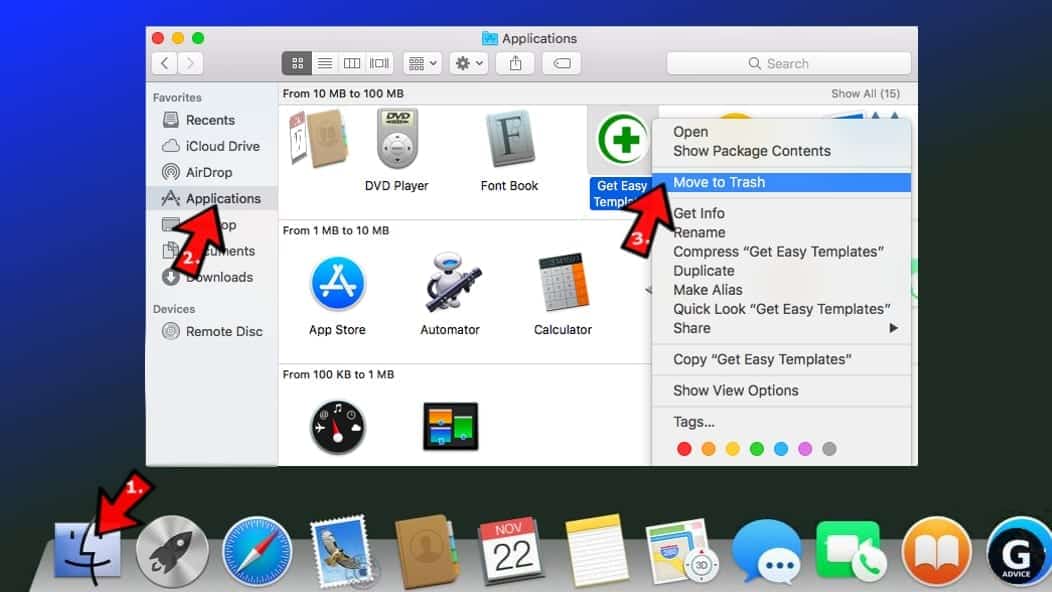
- After moving all suspicious apps to Trash, right-click the Trash bin in Mac's Dock and select Empty Trash.
Remove using INTEGO ANTIVIRUS for Mac (includes scanning for iOS devices). The one-of-a-kind security suite provides VirusBarrier X9 real-time protection against Mac and Windows-based malware, removes existing threats and scans for malware in popular e-mail clients. Includes NetBarrier X9, an intelligent firewall for home, work and public connections.
Remove ExtendedLibrary adware from Safari
Uninstall suspicious Safari extensions
- Open Safari and click on Safari button in the top left corner. Select Preferences in the menu that appears on the screen.
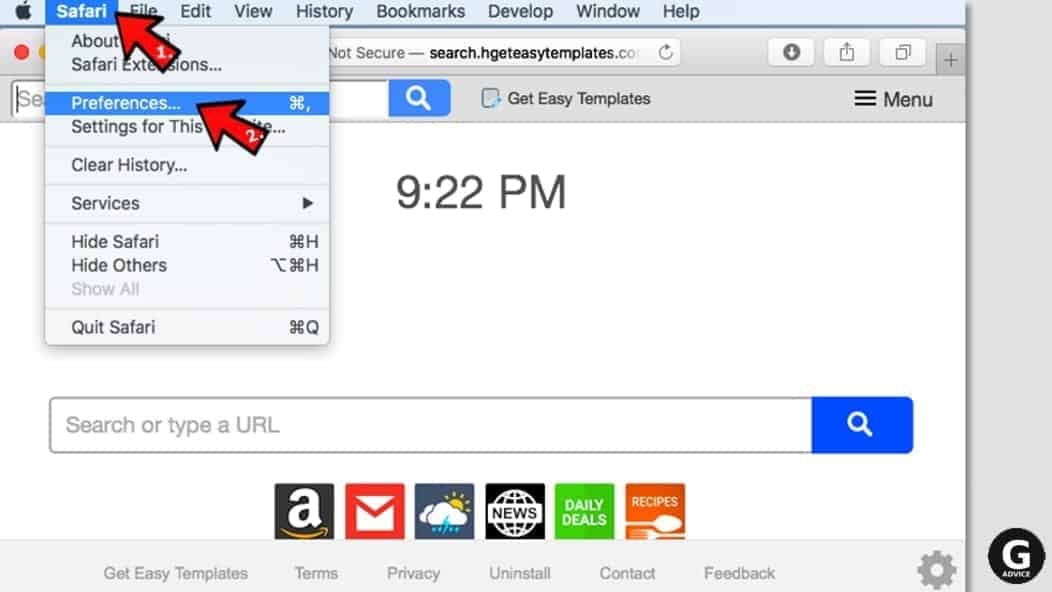
- Now, go to Extensions tab. Look at the left to see all installed extensions, click on suspicious ones and hit that Uninstall button as shown in the picture. Confirm your choice by clicking Uninstall again. Repeat until you get rid of all unwanted extensions.
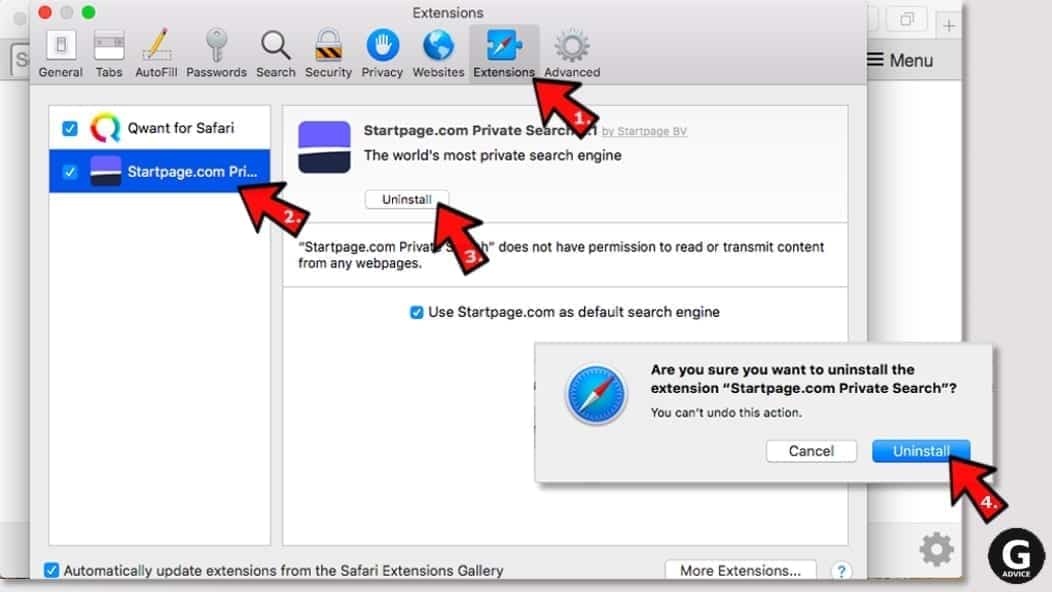
Change Safari Homepage and default search engine
- In Preferences, open the General tab. Here, check what URL is set as your homepage. Delete it and type in whatever URL you want to set as your Safari Start Page.
- Next, go to the Search tab. Here, choose what Search engine you want to set as default.
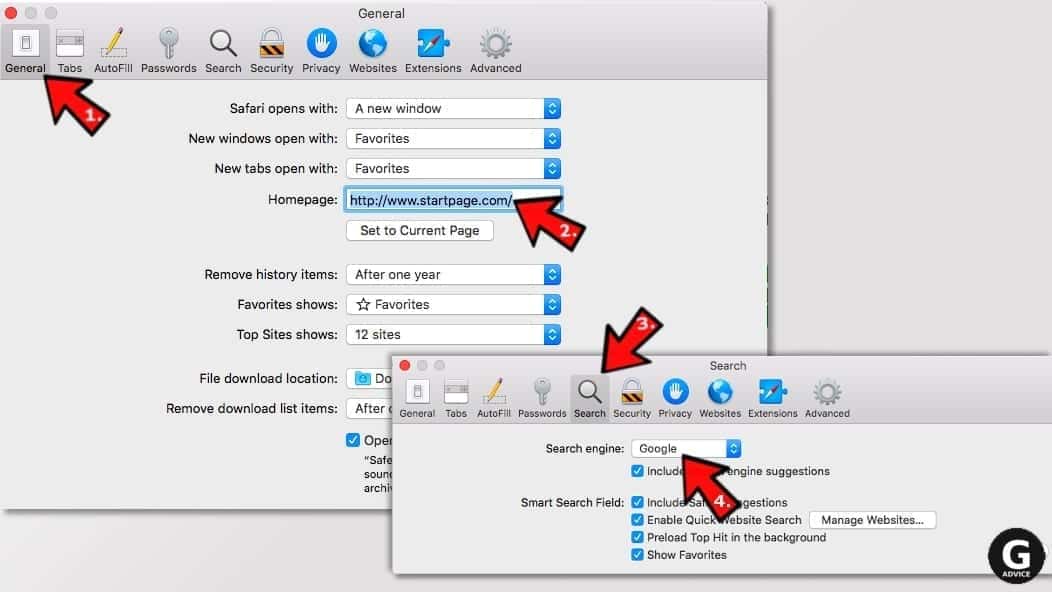
- Next, click on Manage websites... then Remove all... and then Done.
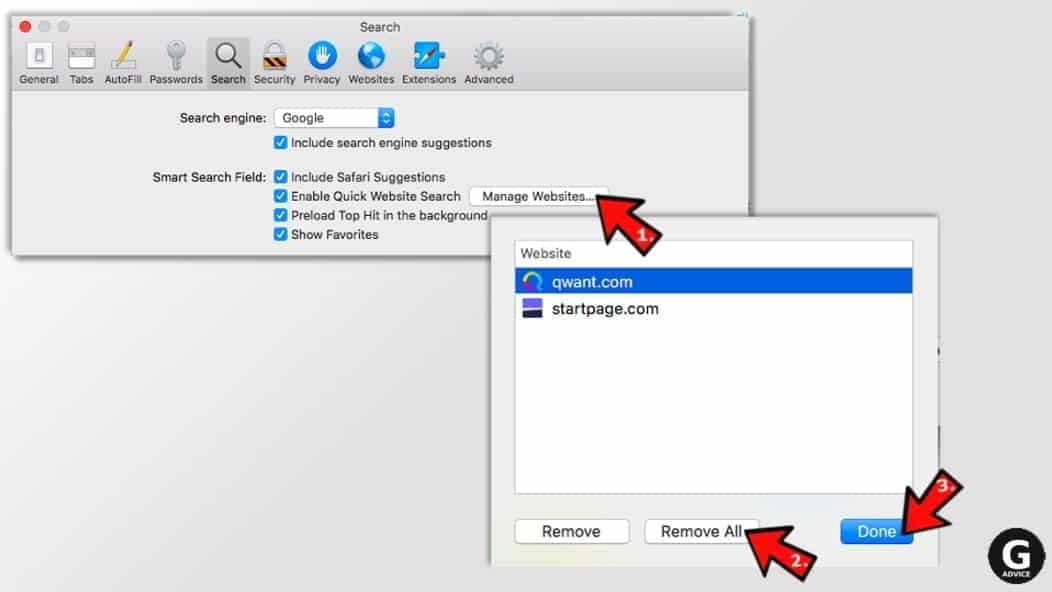
Remove push notifications on Safari
Some suspicious websites can try to corrupt your Safari by asking to enable push notifications. If you have accidentally agreed, your browser will be flooded with various intrusive advertisements and pop-ups. You can get rid of them by following this quick guide:
- Open Safari and click on Safari button in the top-left corner of the screen to select Preferences;
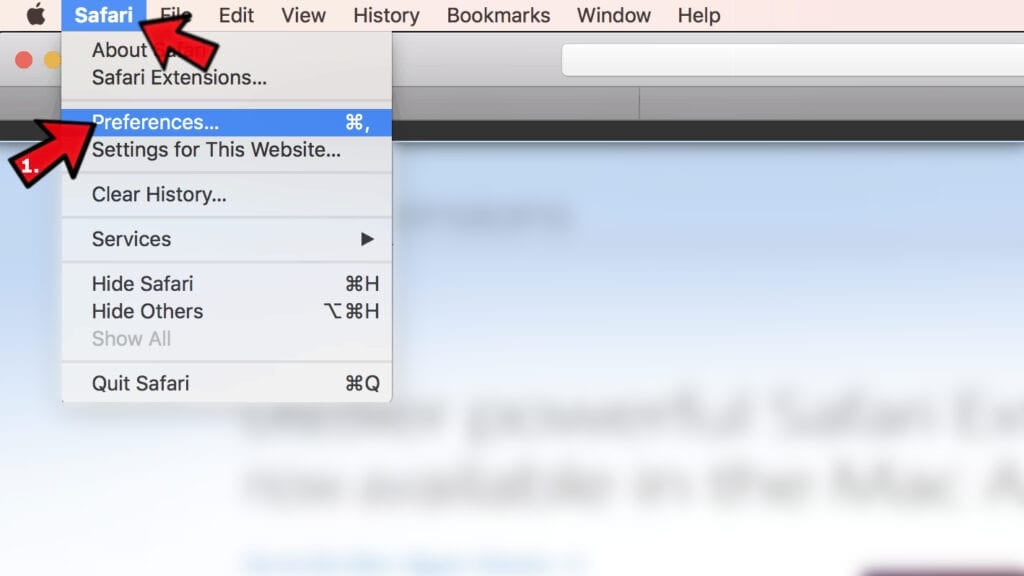
- Go to Websites tab and navigate to Notifications on the left side toolbar.
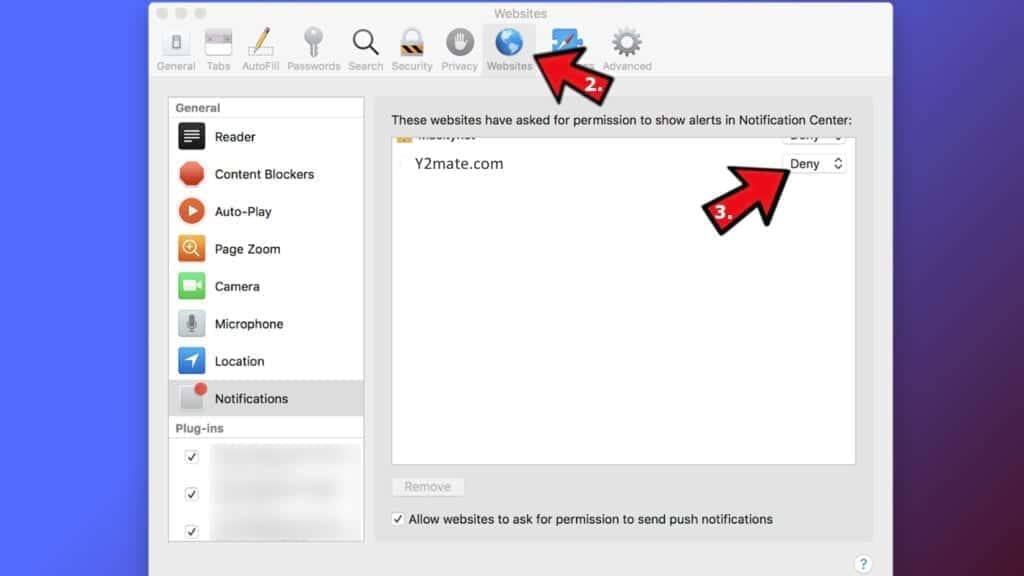
Reset Safari
- Click on Safari > Clear History...
- Then choose to clear All history and hit Clear History button to confirm.
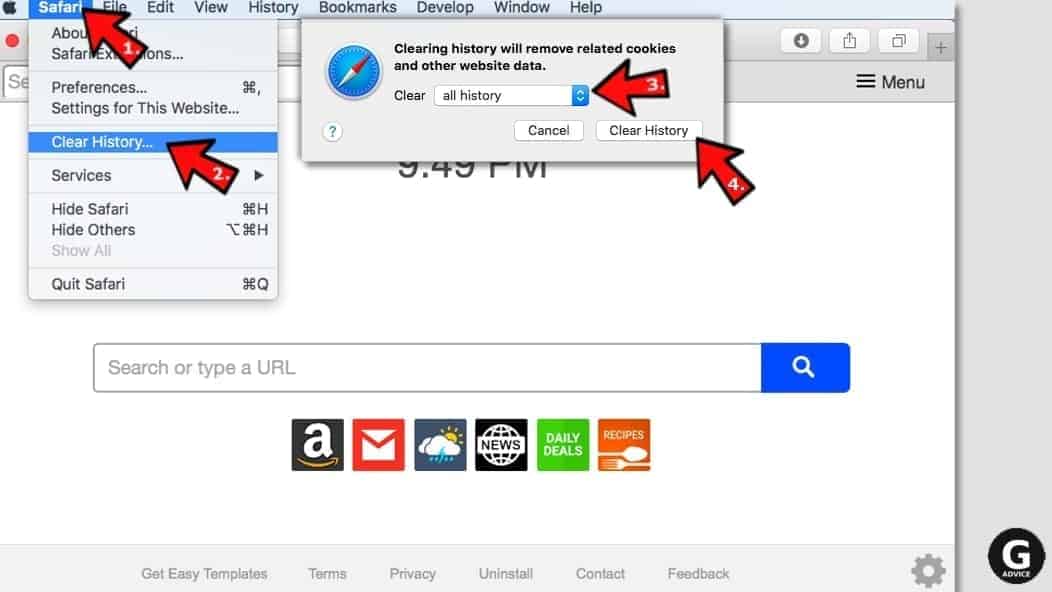
- Go to Safari > Preferences and then open Privacy tab.
- Click Manage Website Data... then Remove All. To finish, click Done.
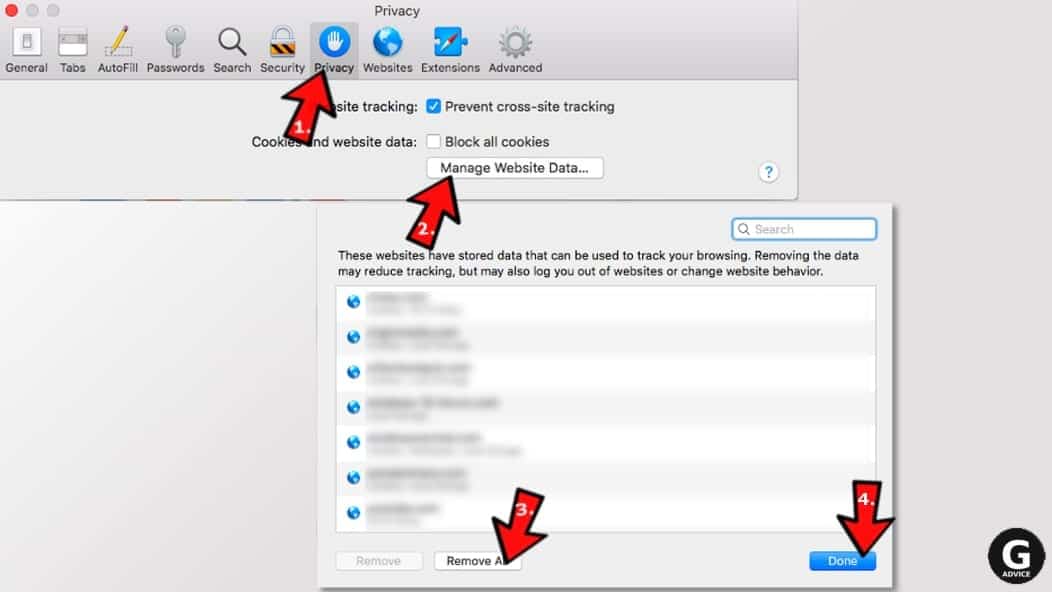
- Finally, clear Safari cache. In Safari Menu, click Develop > Clear Cache.
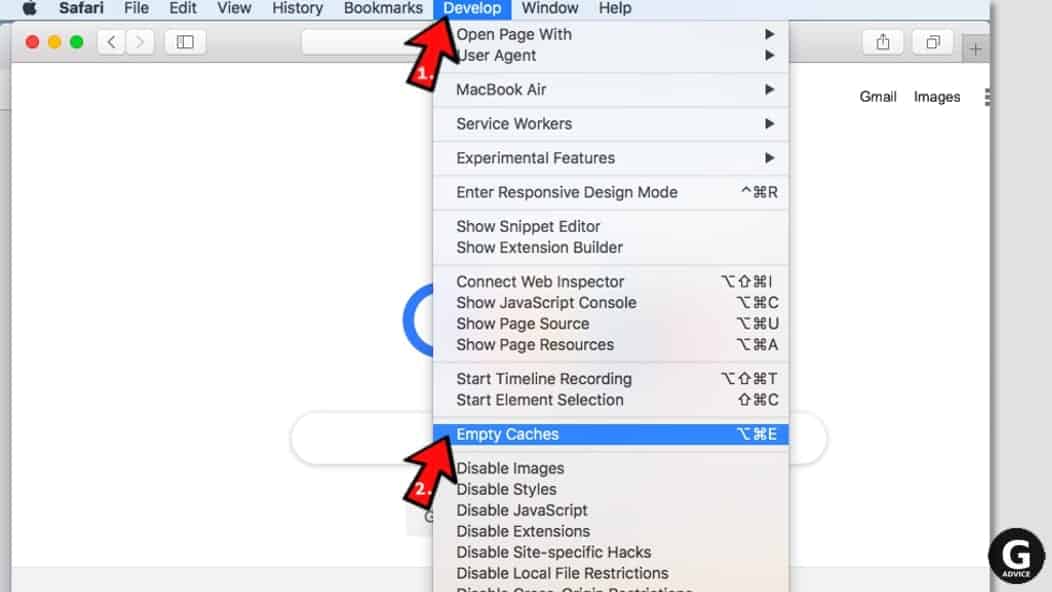
Remove ExtendedLibrary adware from Google Chrome
Remove suspicious Chrome extensions
- Open Chrome and type chrome://extensions into address bar and press Enter.
- Here, look for suspicious extensions, and Remove them.
- Don't forget to confirm by pressing Remove in the confirmation pop-up.
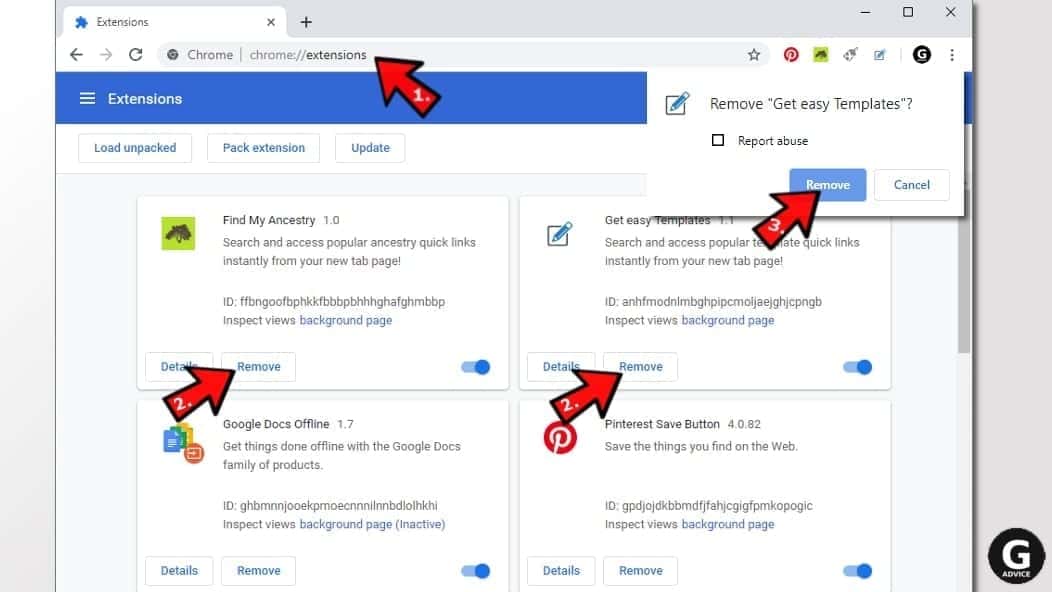
Change Start Page settings
- In Chrome address bar, type chrome://settings and press Enter.
- Scroll down to the On startup section. Check for suspicious extensions controlling these settings, and Disable them.
- Additionally, you can set browser to Open a specific page or set of pages via these settings. Simply choose this option, click Add a new page, enter your preferred URL (f.e. www.google.com) and press Add.
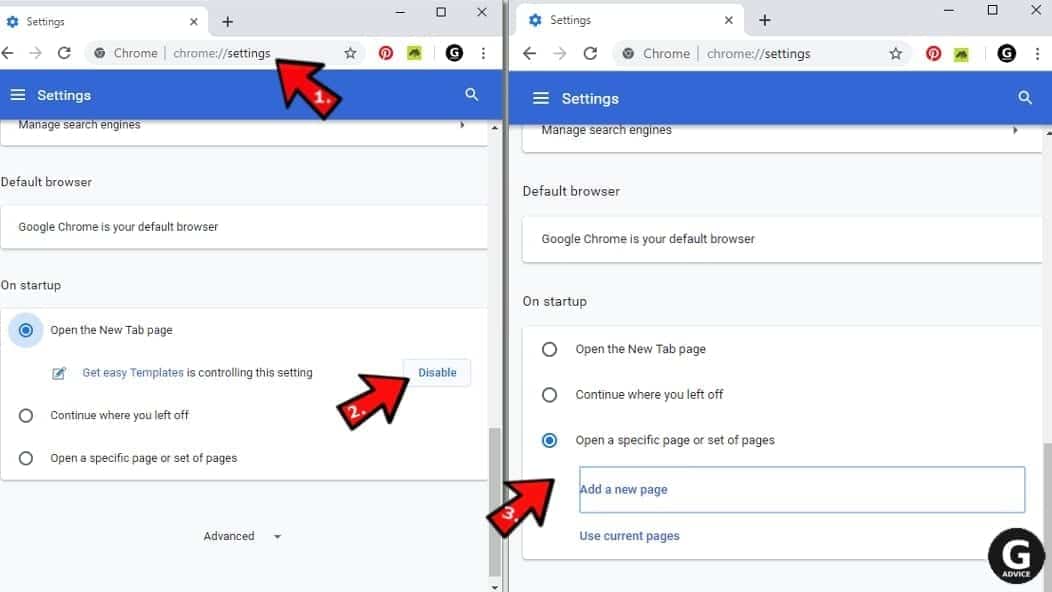
Change default search settings
- In Chrome URL bar, type chrome://settings/searchEngines and press Enter. Make sure you type searchEngines, not searchengines. Additionally, you can go to chrome://settings and find Manage search engines option.
- First, look at the list of search engines and find the one you want to set as default. Click the three dots next to it and select Make Default.
- Finally, look through the list and eliminate suspicious entries. Right-click the three dots and select Remove from the list.
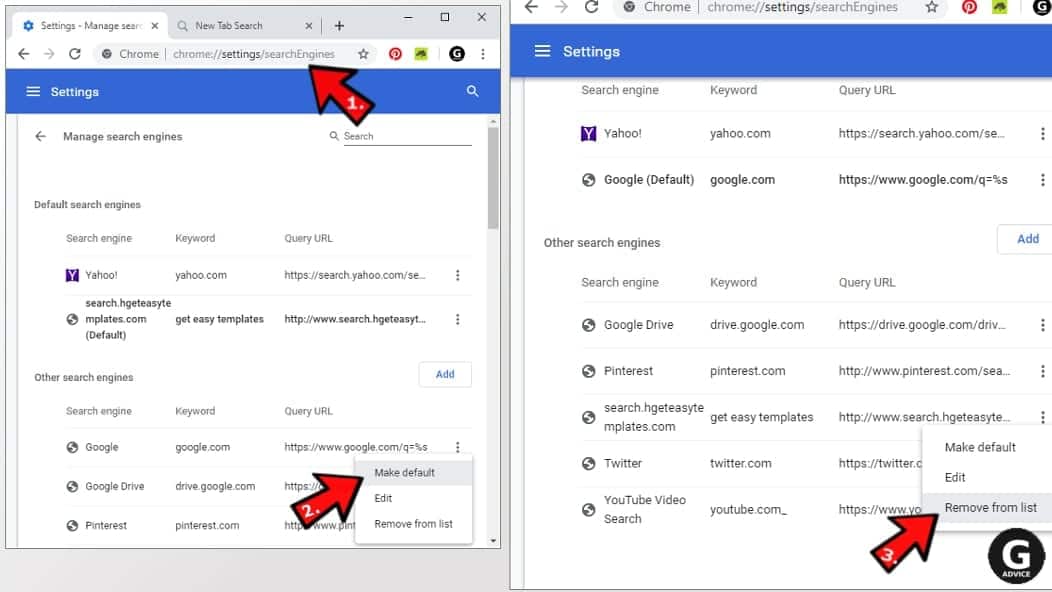
Remove push notifications from Chrome
If you want to get rid of the annoying ads and so-called push-notifications viruses, you must identify their components and clean your browser. You can easily remove ads from Chrome by following these steps:
- In Google Chrome, press on Menu (upward arrow) in the top-right corner of the window.
- Select Settings.
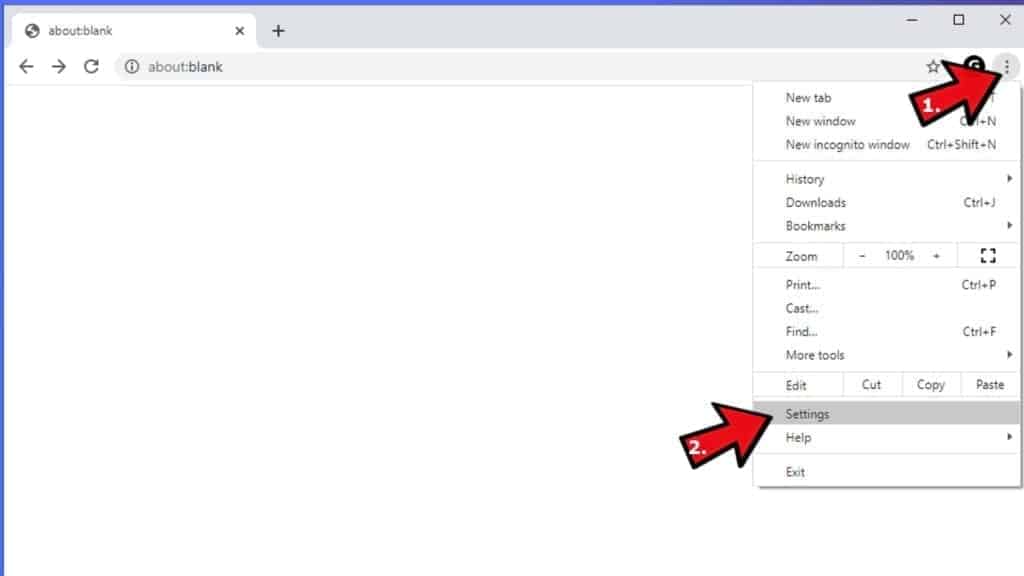
- Go to Privacy and Security > Site Settings.
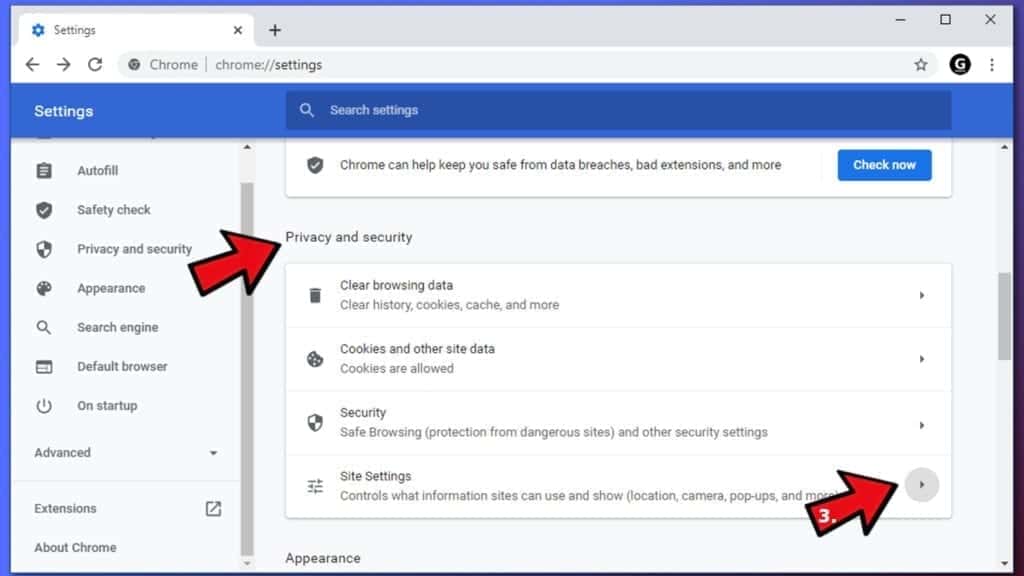
- Open Notifications.
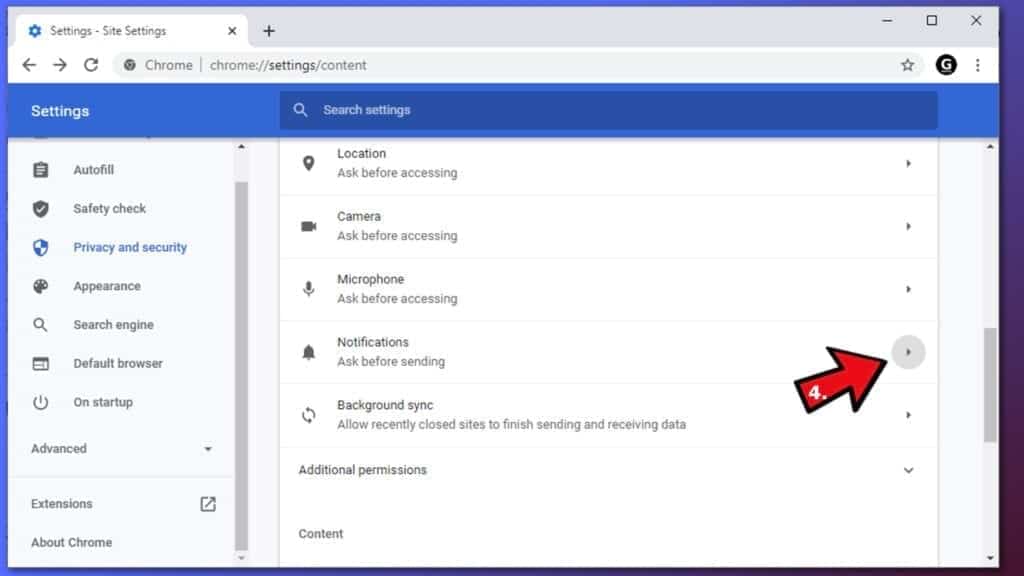
- Here, go to the Allow list and identify suspicious URLs. You can either Block or Remove by pressing on the three vertical dots on the right side of the URL. However, we suggest the Block option, so the site won't ask you to enable the notifications if you ever visit it again.
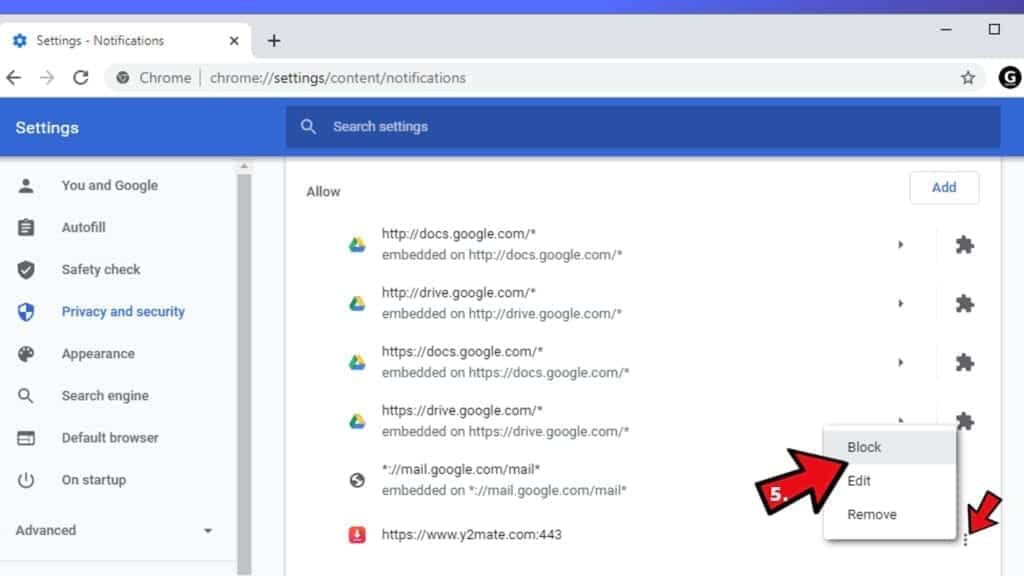
Reset Google Chrome browser
- The final option is to reset Google Chrome. Type chrome://settings in the URL bar, press Enter and then scroll down until you see Advanced option. Click it and scroll to the bottom of the settings.
- Click Restore settings to their original defaults.
- Click Restore settings to confirm.
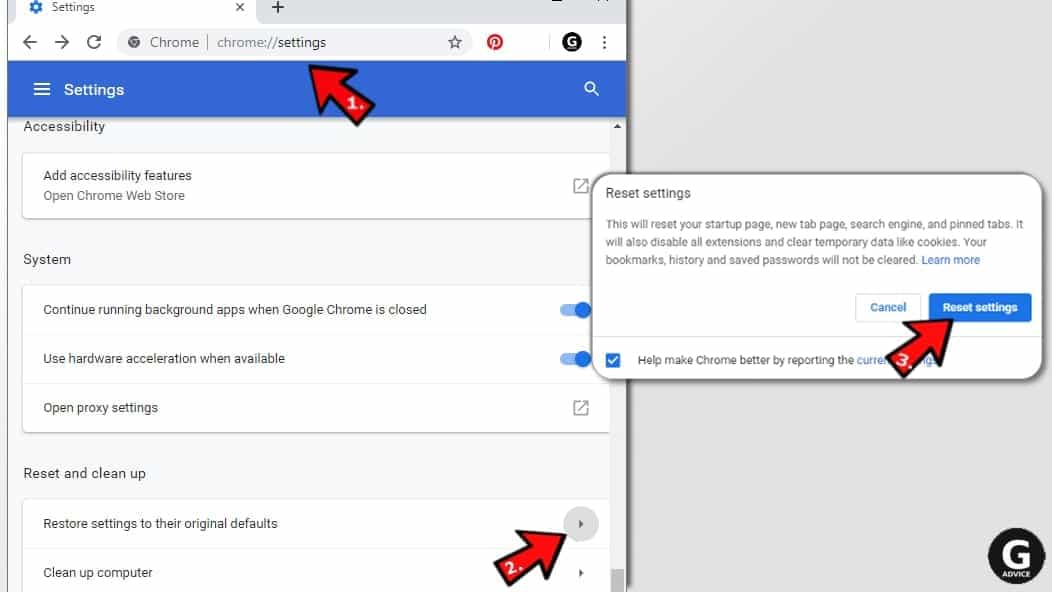
Remove ExtendedLibrary adware from Mozilla Firefox
Remove unwanted add-ons from Firefox
- Open Firefox and type about:addons in the URL bar. Press Enter.
- Now, click on Extensions (in the left section).
- Click Remove next to every suspicious browser add-on that you can't remember installing.
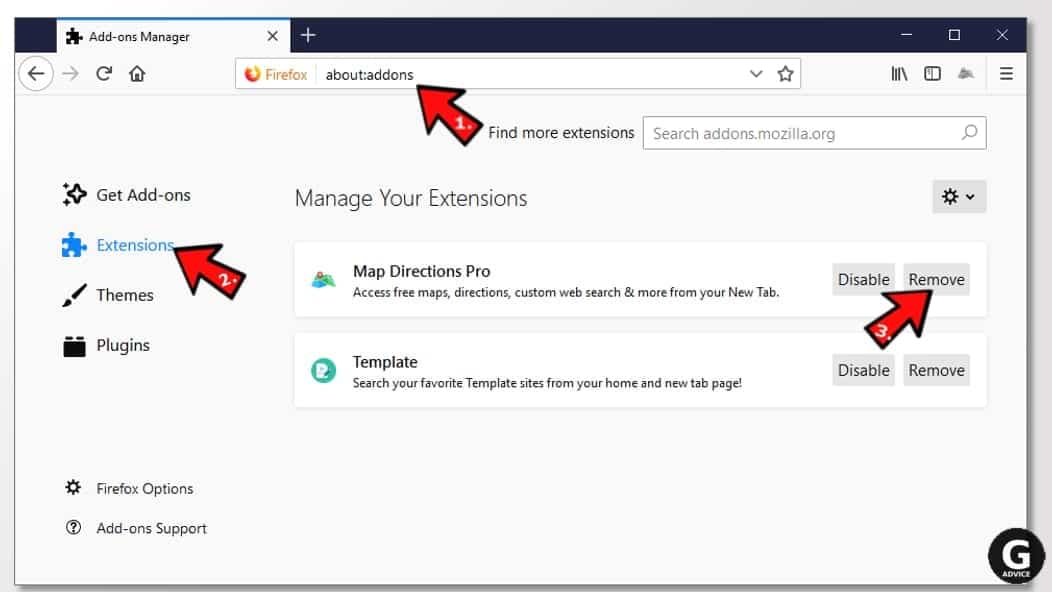
Change Firefox Homepage
- In Firefox address bar, type about:preferences and hit Enter.
- Look at the left and click the Home tab.
- Here, delete the suspicious URL and type or paste in the URL of a website you'd like to set as your homepage.
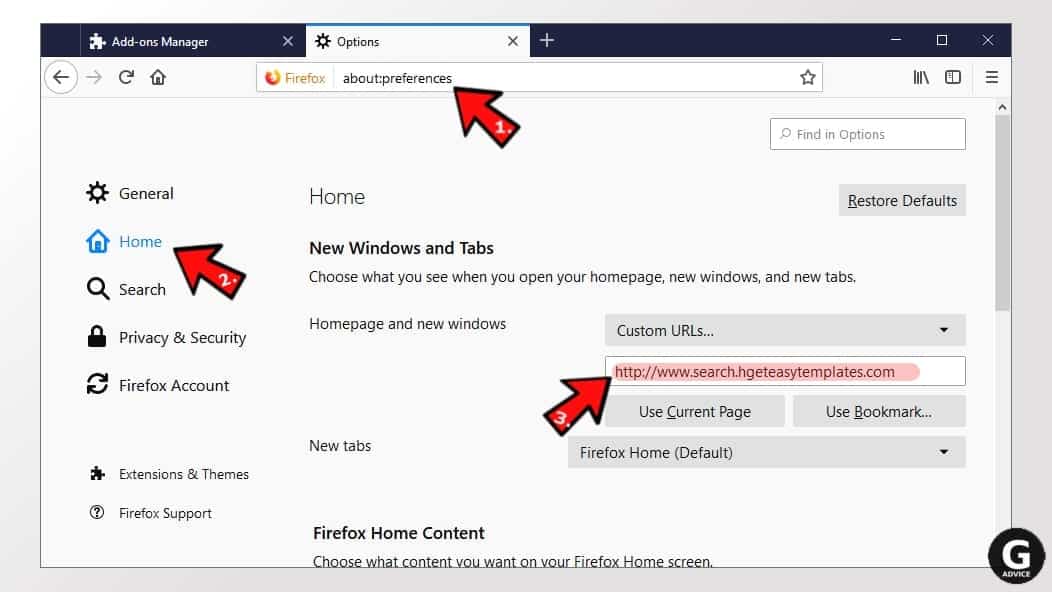
Alter preferences in Firefox
- Type about:config in Firefox address bar and hit Enter.
- Click I accept the risk! to continue.
- Here, type in the URL which has taken over your browser without your knowledge. Right-click each value that includes it and choose Reset.
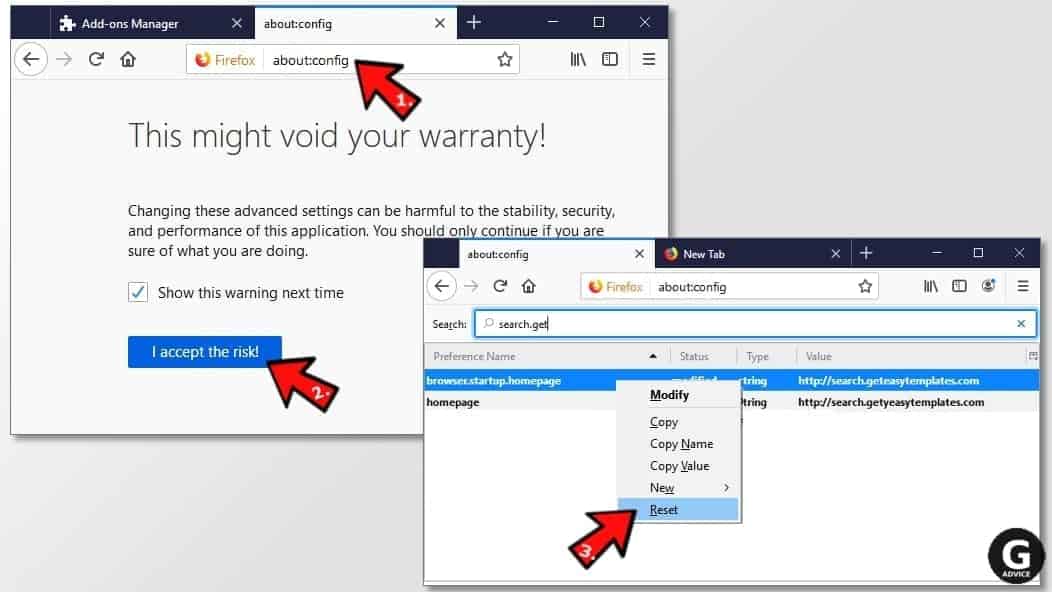
Remove annoying push notifications from Firefox
Suspicious sites that ask to enable push notifications gain access to Mozilla's settings and can deliver intrusive advertisements when browsing the Internet. Therefore, you should remove access to your browser by following these simple steps:
- In Mozilla Firefox, click on Menu (the three horizontal bars) on the top-right corner of the window, then choose Options.
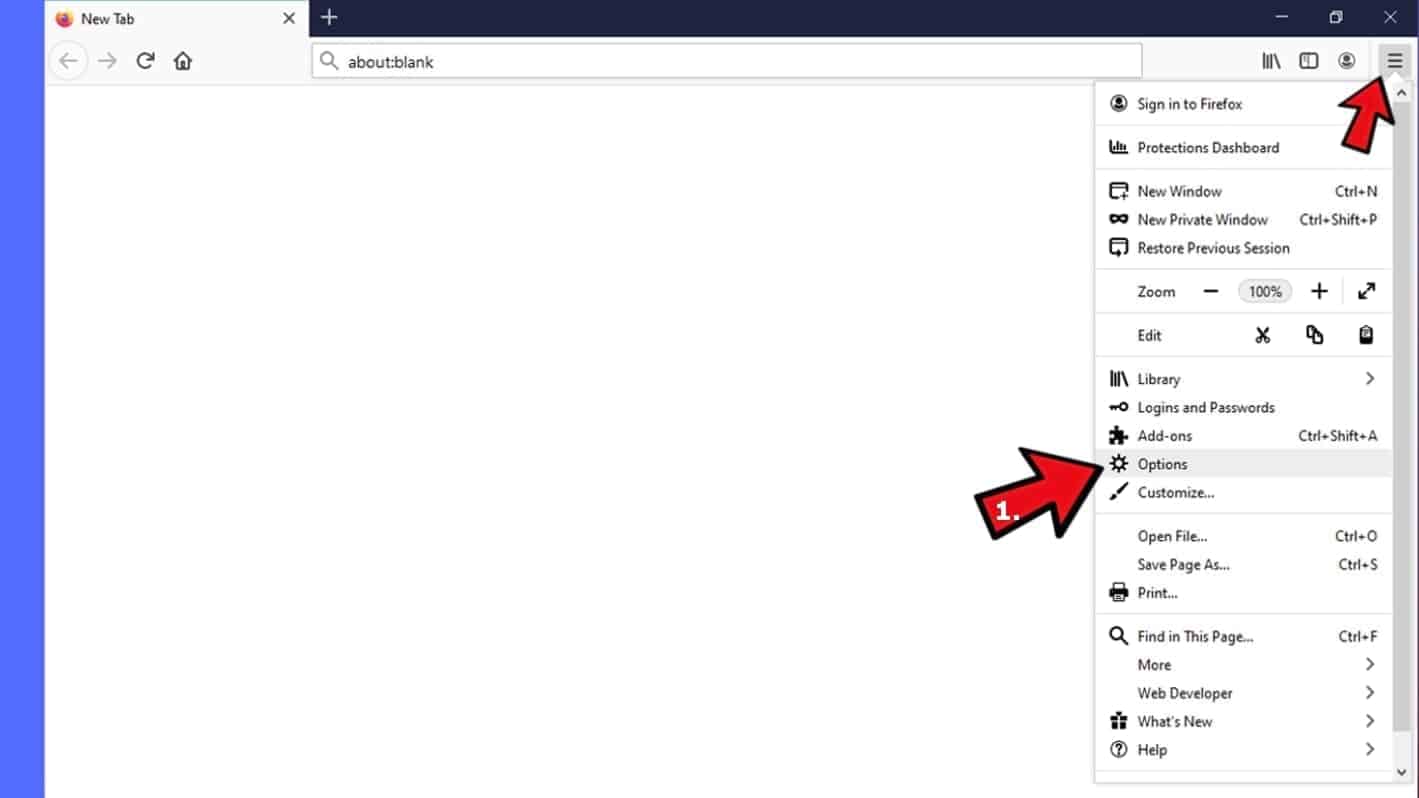
- Click on Privacy and Security, then scroll down to Permissions section.
- Here, find Notifications and click Settings button next to it.
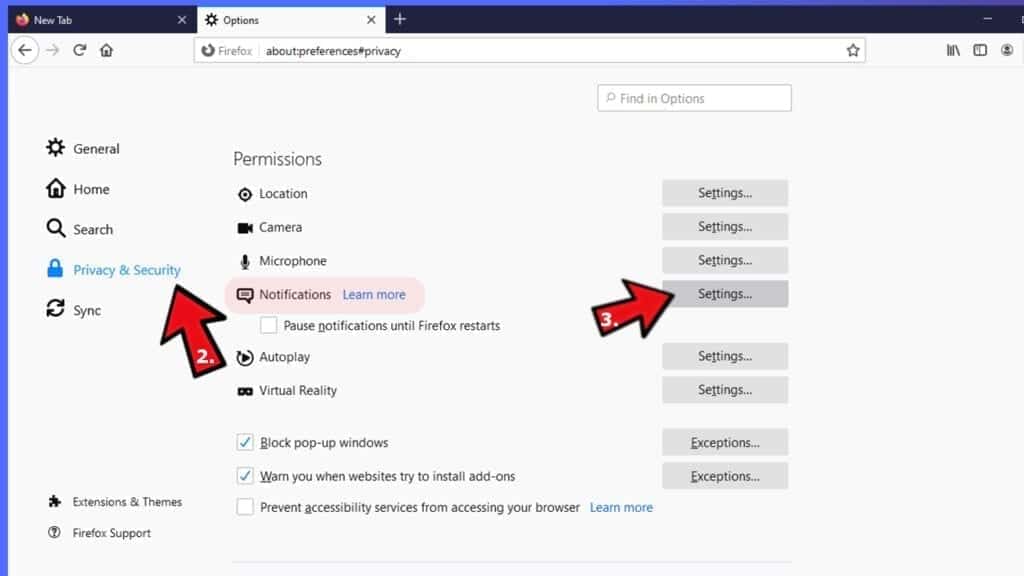
- Identify all unknown URLs and choose to Block them. Click Save Changes afterward.
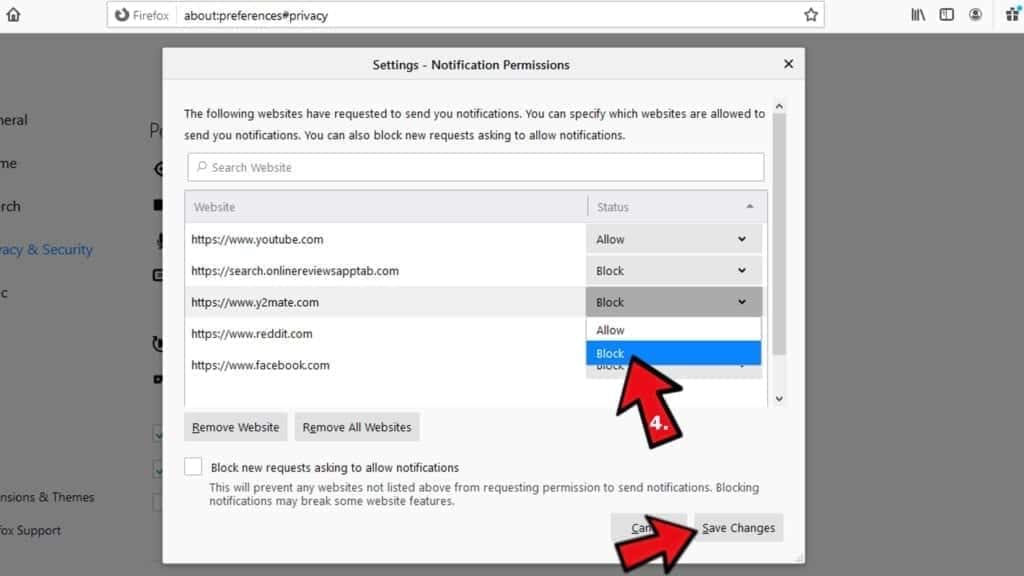
Reset Mozilla Firefox
- In Firefox, type about:support in the address bar and press Enter.
- Click on Refresh Firefox...
- Click Refresh Firefox again to confirm.
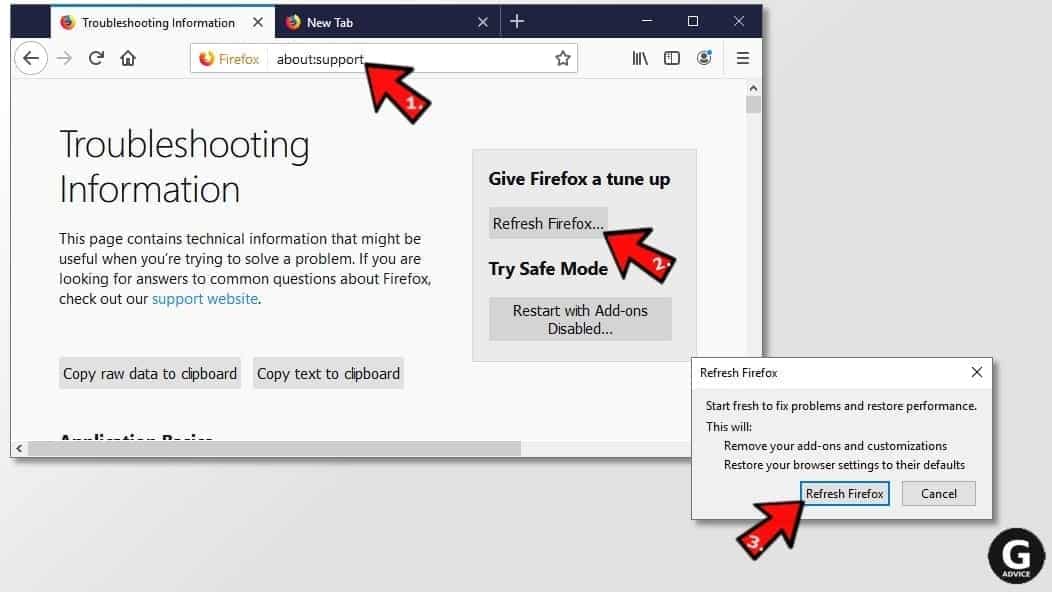
Disclaimer. This site includes affiliate links. We may earn a small commission by recommending certain products, at no additional cost for you. We only choose quality software and services to recommend.

Scott Bolton is a senior content strategist in our Geek’s Advice team. He is exceptionally passionate about covering the latest information technology themes and inspire other team members to follow new innovations. Despite the fact that Scott is an old-timer among the Geeks, he still enjoys writing comprehensive articles about exciting cybersecurity news or quick tutorials.
Leave a Reply